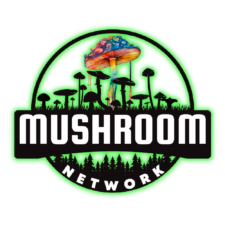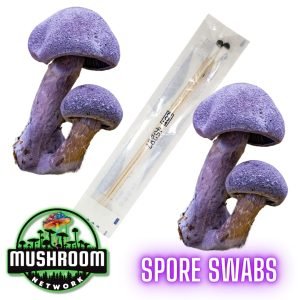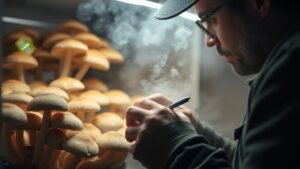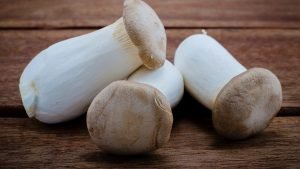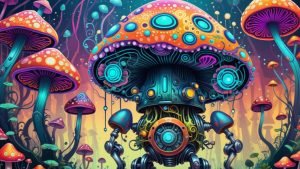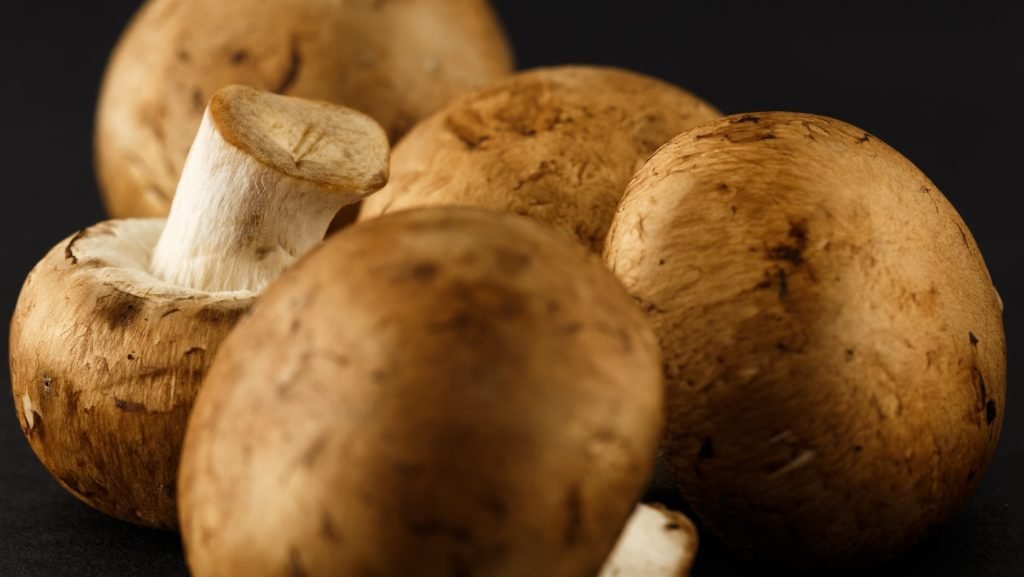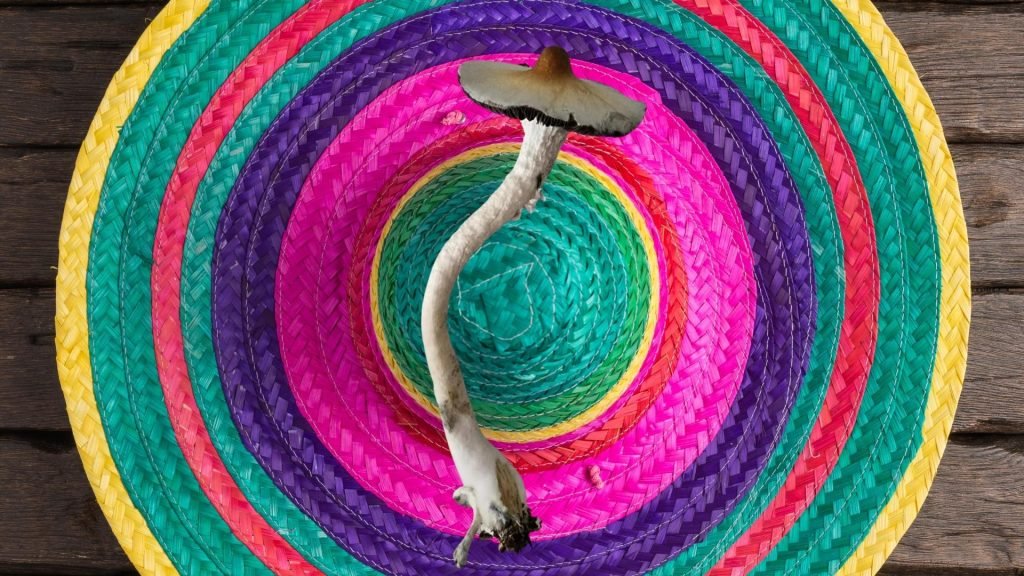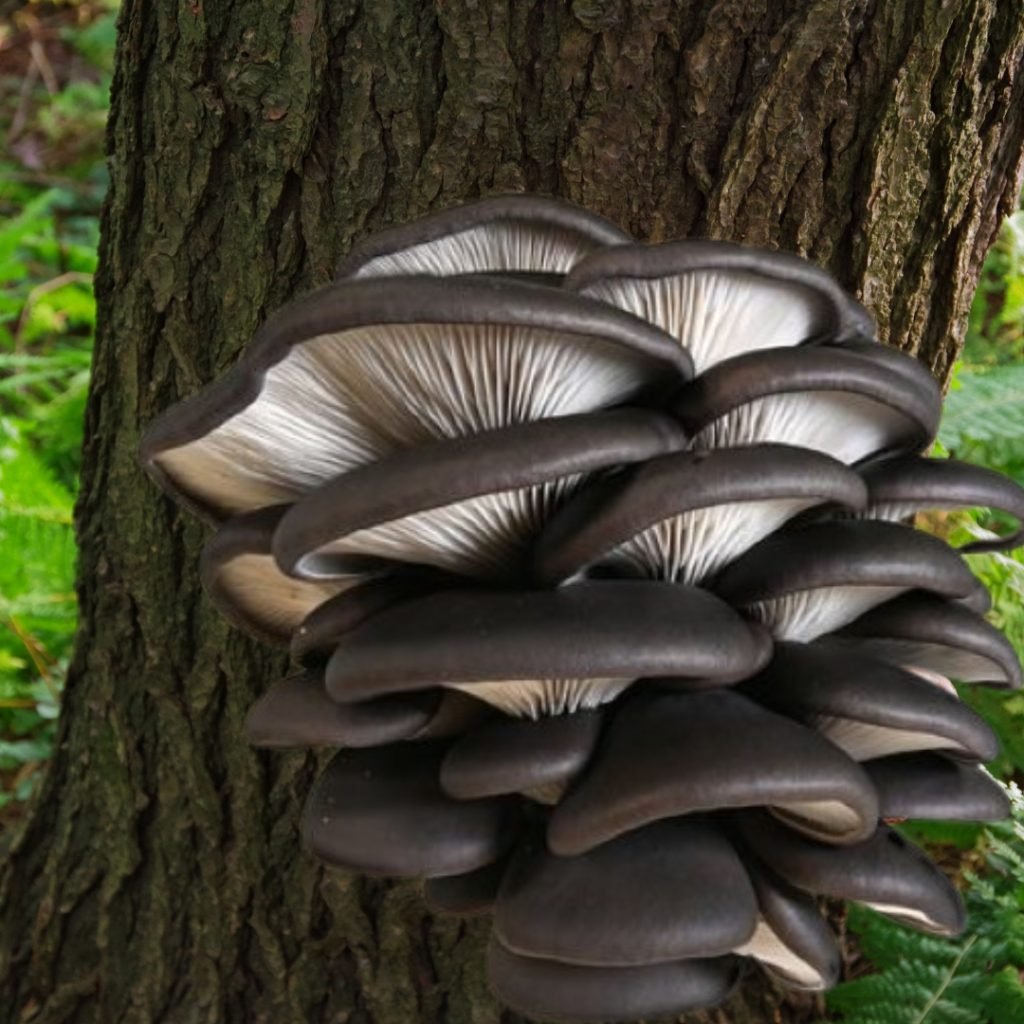Florida’s diverse landscapes, from sun-drenched coasts to shadowy wetlands, not only draw in sun-seekers and alligator enthusiasts but also harbor an incredible array of fungal species. Beyond the state’s iconic oranges and beaches lies a mycological realm waiting to be explored. This article aims to guide you through Florida’s fascinating fungal tapestry, highlighting the unique species that call it home.
In-Depth Exploration:
Florida’s humid climate and varied ecosystems provide the perfect backdrop for an intricate dance of decomposition, symbiosis, and growth – the fungal ballet.

Florida’s Fungal Habitats:
The Sunshine State, better known for its sandy beaches and theme parks, has a plethora of habitats that are ideal for fungi. The dampness of its swamps, the shaded understories of its forests, and the organic-rich soils of its meadows collectively provide diverse homes for numerous fungi.
Everglades, the vast tropical wetland, is a hotbed of fungal activity. The high moisture levels coupled with rich organic materials make it a prime spot for decomposition—a critical process where fungi play a starring role. Fungi here help break down fallen leaves, dead trees, and other organic detritus, recycling nutrients and maintaining the delicate balance of this ecosystem.
Florida’s pine forests, on the other hand, witness a unique symbiotic relationship between fungi and trees. Mycorrhizal fungi, which form partnerships with the roots of these trees, facilitate nutrient exchange, aiding the trees in absorbing minerals and water.
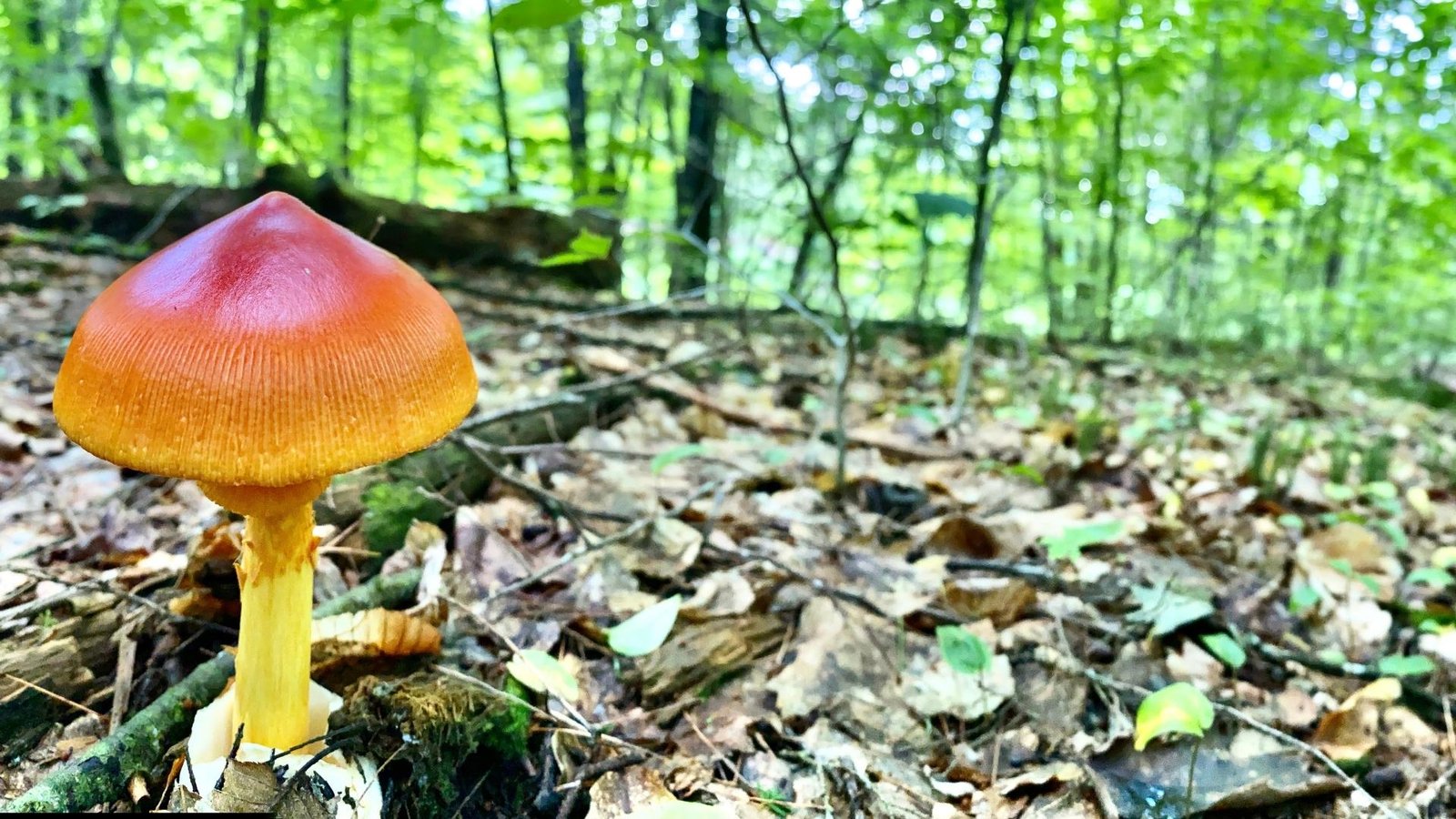
Spotlight on Florida’s Unique Fungi:
Lactarius Indigo, or the Indigo Milk Cap, is a spectacular representation of Florida’s mycological treasures. When cut or bruised, this strikingly blue mushroom exudes a dark blue ‘milk’ or latex. While it’s found in various parts of North America, in Florida’s pine forests, it forms symbiotic relationships with the trees, enhancing the woodland’s health.
Amanita Jacksonii, known as Jackson’s Slender Caesar, is another gem. Characterized by its bright red cap and delicate white gills and stem, it’s not just a visual treat but also considered edible and delicious by many foragers. However, caution is advised, as other red Amanitas can be toxic.
The universe of mushrooms is expansive, each variant bearing its own unique charm and characteristics. The Marketplace on the 🍄 Mushroom Network is a testament to this diversity. It is a haven for those seeking a deeper understanding of the magical world of mushrooms. If you’re keen on learning more about this type of mushroom and other mushroom variants, this Marketplace is your ultimate resource.
Ecological Importance of Florida’s Fungi:
Beyond their aesthetic appeal, fungi serve as the ecological linchpins in Florida’s ecosystems. In wetlands, they accelerate the decomposition of tough plant materials like sawgrass, facilitating nutrient cycling. Without fungi, these ecosystems would choke on undecomposed organic matter.
In pine forests, fungi like the Indigo Milk Cap ensure trees receive essential nutrients, enhancing forest health and resilience. Moreover, many of Florida’s fungi form complex networks with plants, aiding in communication and nutrient transfer, often termed the “Wood Wide Web.”
Not sure where to start? The 🍄 Mushroom Academy offers a wide range of courses tailored to your needs. Whether you’re a beginner eager to learn or an experienced mycologist looking to broaden your knowledge, the 🍄 Academy has something for everyone.
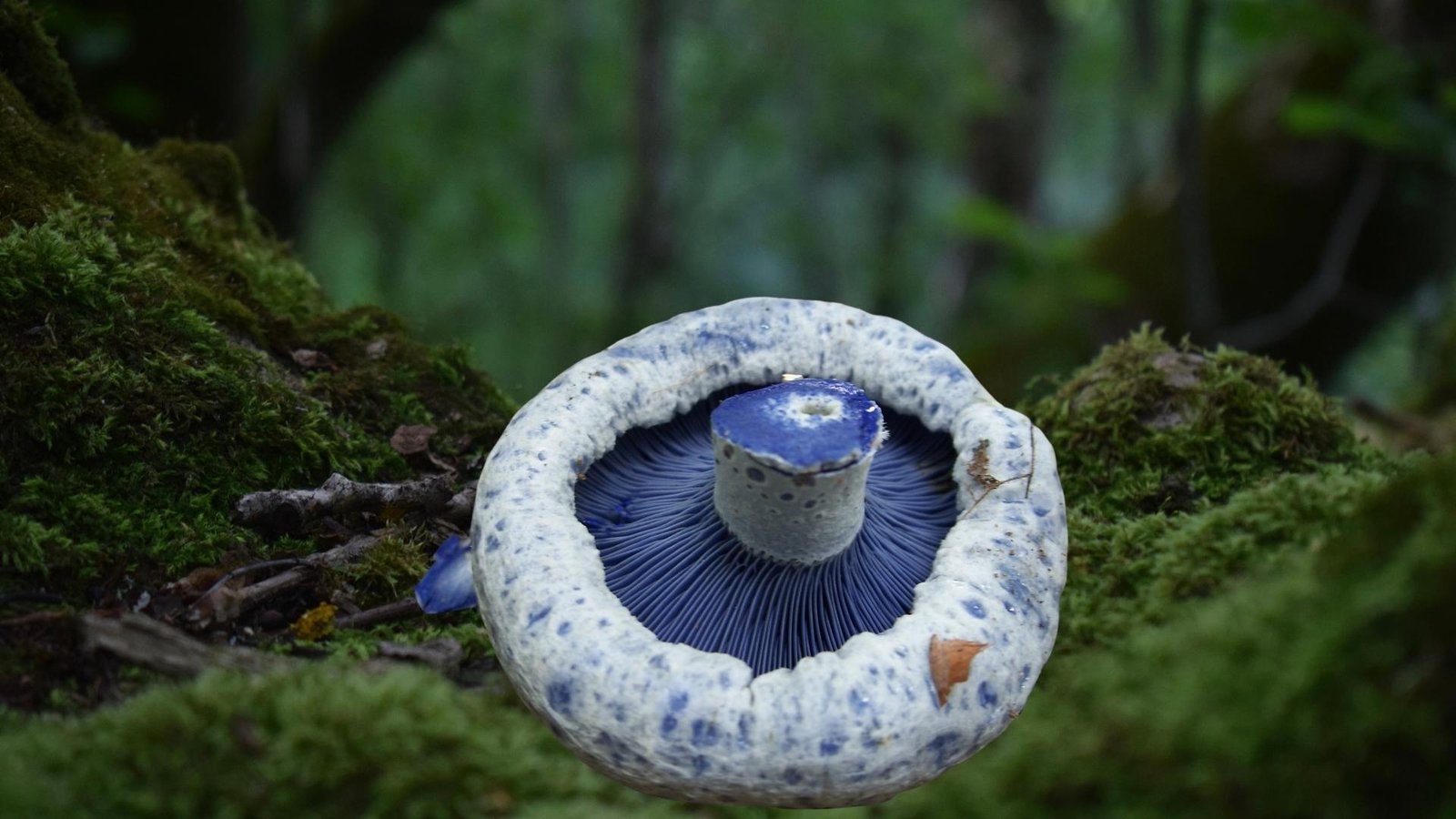
The Mycological Mosaic’s Finale:
As we tread lightly on the forest floor or navigate the swamp’s waterways, it becomes evident that Florida’s beauty isn’t just in its sunsets or beaches but also in its often-overlooked fungal inhabitants. These microscopic spores, in turn, weave an intricate web of life that sustains the very landscapes we so admire.
Don’t forget to check out the 🍄 Mushroom Network’s Marketplace to see what’s available. But hurry, our shelves are constantly evolving, and you wouldn’t want to miss out on this wonderful mushroom. Join our growing network of Patrons, Genetics, and Mycologist Vendors only on the 🍄 Mushroom Network!
Recommended Reads:
Home Mushroom Cultivation – Step-by-Step for Beginners and Experts
About This Article: The article provides a comprehensive guide to home mushroom cultivation for beginners...
Read More...Substrate for Mycology: A Comprehensive Guide on Hardwood Pellets
Journey into the rich tapestry of mycology, diving deep into hardwood pellets – a favored...
Read More...King Oyster (Pleurotus Eryngii)
Scientific Name: Pleurotus Eryngii COMMON NAME(S): King Trumpet Mushroom | French Horn Mushroom | King...
Read More...When Mycology Meets Technology: Cyborg Mushrooms
The merging of organic life with technology often feels like a concept relegated to the...
Read More...Whoa there, Spore Sport! 🍄 Looks like you’re not logged in yet. Don’t you know what you’re missing? MYCO-CREDITS! Imagine all the fungal fun you could have. It’s like finding a Morel in May and not picking it. Tragic, right? Log In or Become a Myco-Patron and start racking up those credits. It’s more rewarding than finding a mushroom in your backyard! 🌟🏡
